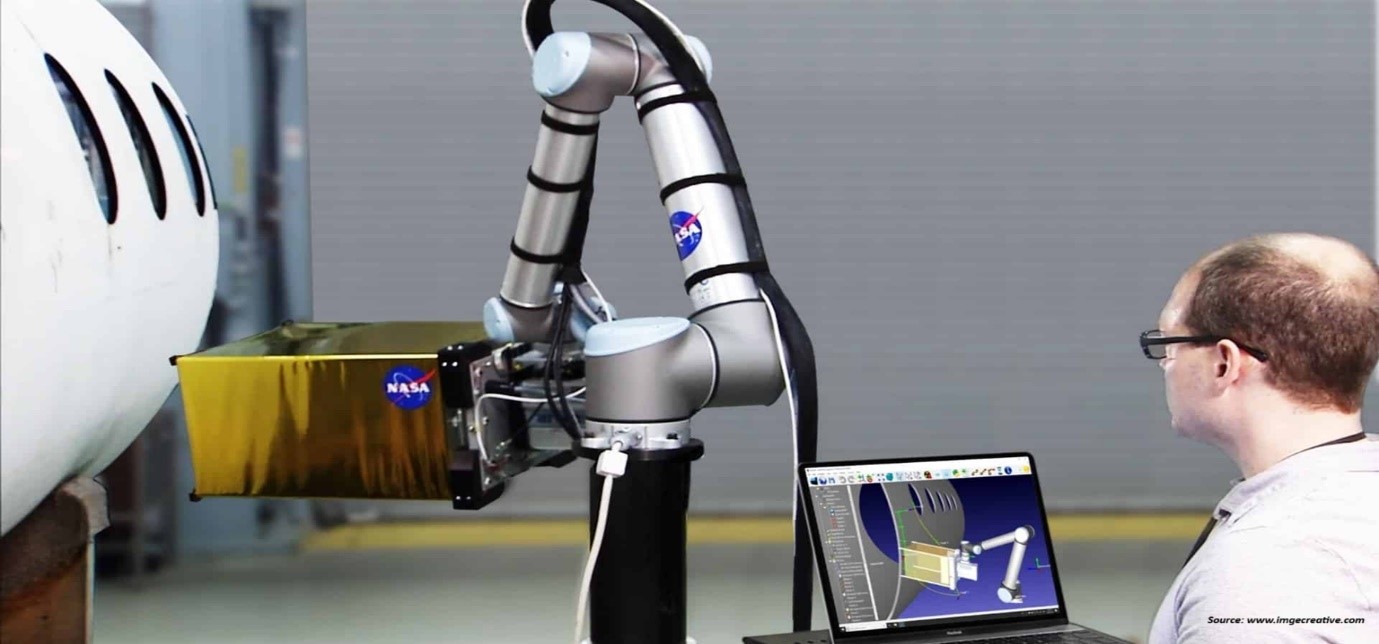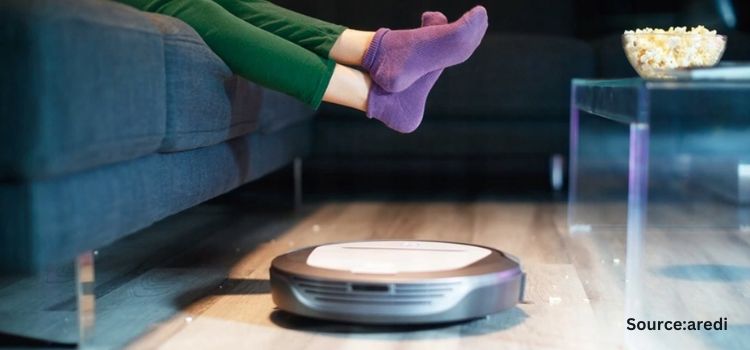
Smart Furniture Market by Product Type (Smart Tables & Desks, Smart Stools & Benches, Smart Chairs, and Smart Beds), by End Use (Residential and Commercial), and by Distribution Channel (Online and Offline) – Global Opportunity Analysis and Industry Forecast, 2024–2030
Industry: ICT & Media | Publish Date: 28-Nov-2024 | No of Pages: 264 | No. of Tables: 333 | No. of Figures: 169 | Format: PDF | Report Code : IC478
Smart Furniture Market Overview:
The global Smart Furniture Market size was valued at USD 3.25 billion in 2023 and is expected to reach USD 5.18 billion by 2030, with a CAGR of 6.9% from 2024 to 2030. Smart furniture refers to modern furnishings and fixtures designed with embedded technology, sensors, and connectivity features that enhance their functionality, convenience, and usability. These pieces of furniture are equipped with the ability to interact with users and adapt to various needs, often through remote control, smartphone apps, or voice-activated virtual assistants. Smart furniture improves comfort, efficiency, and user experience in living, working, or recreational spaces by integrating elements such as adjustable settings, built-in charging capabilities, environmental sensors, and connectivity with other smart devices.
The Growing Penetration of IoT Devices in Residential Spaces Drives Market Growth
The ever-increasing penetration of the Internet of Things (IoT) devices into residential spaces is playing a pivotal role in propelling the growth of the smart furniture industry. In an era where connectivity and convenience are paramount, consumers embrace IoT technology to enhance their daily lives. Smart furniture, equipped with sensors and connectivity features, seamlessly integrates with these IoT devices to provide a more personalized and efficient living experience.
From voice-activated lighting and climate control systems to coffee tables with built-in wireless chargers and Bluetooth speakers, smart furniture offers a harmonious blend of aesthetics and functionality. The need for a connected and automated home drives the demand for this type of furniture. As more homeowners recognize the benefits of this fusion of technology and design, the smart furniture industry continues to evolve and expand, ushering in a new era of intelligent and responsive living spaces.
Based on the statistics released by the International Data Corporation (IDC), it is estimated that worldwide spending on IoT reached a staggering USD 805.7 billion in 2023, demonstrating a substantial 10.6% increase from the previous year. Moreover, investments in IoT are anticipated to surpass the monumental milestone of USD 1 trillion by 2026, with an annual growth rate of 10.4% from 2023 to 2027. The escalating investment in IoT shows the growing bond between technology and furniture, further stimulating the remarkable growth of the smart furniture market.
Rising Disposable Income Worldwide Further Fuels the Market Growth
The increasing global disposable income per capita is a significant driver behind the growth of the smart furniture market. As individuals have more disposable income, they are increasingly inclined to invest in smart furniture solutions that offer enhanced comfort, convenience, and efficiency in their homes. Reports published by the U.S. Energy Information Administration revealed that the worldwide per capita disposable income stood at USD 10,136 in 2022. It is projected to soar to USD 12,056 by 2030, and further escalate to USD 17,277 in 2050 with an average annual growth rate of 1.9%. The expanding affordability and purchasing power fueled by rising incomes are consequently propelling the demand for smart furniture, boosting market growth.
Rising Demand for Space Saving and Multi-Functional Furniture Propels Market Growth
The growing need for furniture that saves space and serves multiple functions is a key factor driving the popularity of smart furniture. In today's busy urban areas, where living spaces are often limited in size, people are looking for smart solutions that make the most of their available space. This trend reflects the changing lifestyle of city dwellers who prefer compact and versatile furniture. Smart furniture is designed to meet this demand, offering features such as hidden storage, foldable designs, and the ability to adapt to different uses. This furniture is essential for making the most out of small living spaces.
Additionally, the rise of remote work and the need for flexible home environments have made smart furniture even more appealing than before. Homes now serve as offices, gyms, and entertainment spaces, and smart furniture is well-suited to these multiple roles. The smart furniture industry effectively responds to the evolving needs of urban living by offering innovative solutions that combine practicality with technology, reshaping how living spaces in modern cities are utilized.
High Costs and Increased Energy Consumption Hinder the Market Expansion
Integrating advanced technology and smart features into smart furniture tends to be more expensive. This cost can be a real obstacle for many potential buyers, especially those mindful of their budgets. It acts as a barrier that prevents the smart furniture market from expanding, particularly in the segments of the population that prioritize affordability.
Advancement in Home Automation Technology to Create Future Market Prospects.
The rapid advancements in home automation technology are expected to create ample opportunities for the smart furniture industry in the future. This technological progress allows for the integration of smart furniture into the broader smart home ecosystem, making it user-friendly and versatile for consumers of various technical backgrounds. The seamless integration of smart furniture with existing home automation systems, such as voice assistants and smart thermostats, ensures the streamlining of the user experience and enhances the appeal of smart homes.
Additionally, this collaboration between smart furniture and home automation systems contributes to energy efficiency, aligning with the increasingly important trend of eco-friendly living. With more user-friendly, stylish, and environmentally conscious options available than before, the smart furniture industry is well-positioned to thrive as it caters to the evolving needs of homeowners.
North America Holds the Dominant Market Share in the Global Market
The smart furniture market share in North America is expected to grow significantly as businesses and organizations recognize the benefits of these innovative furniture solutions in creating more modern and efficient workspaces. These pieces of furniture are designed with technology integration in mind, making them smarter and more functional for modern work environments.
Smart furniture can offer features such as built-in charging ports, adjustable settings, and data connectivity, which greatly improve the productivity and comfort of office spaces. Moreover, the global market is propelled by the urbanization trend, in which a growing number of people are opting to reside in cities and urban areas, typically in smaller living spaces such as apartments and condos. These pieces of furniture can transform, fold, or hide when not in use, making the most of limited space.
Furthermore, government initiatives and programs play a significant role in driving the growth of the smart furniture industry in North America. This is especially evident in the U.S., where the government has been actively involved in promoting innovative workplace solutions. The U.S. General Services Administration (GSA) officially launched its Workplace Innovation Lab in its headquarters in January 2023.
This lab is a pioneering platform where federal agencies can evaluate the latest advancements in workplace furnishings and technology. The lab is a dynamic space where decision-makers and their teams can interact with state-of-the-art technologies, equipment, and furniture, all designed to empower federal employees and enhance their effectiveness. This, in turn, positively impacts the smart furniture market in North America, as it reflects a broader acceptance and recognition of the value of smart furniture in modern work settings.
Asia-Pacific is Expected to Show Steady Growth in the Global Smart Furniture Market
Asia-Pacific is home to a burgeoning population that is not only increasingly connected but also well-versed in the latest technological trends. As technology seamlessly integrates into daily life, consumers in this region exhibit a heightened interest in innovative and tech-driven products, and smart furniture aligns perfectly with this trend. Also, as people's incomes increase, so does their purchasing power and capacity to invest in more sophisticated and technologically advanced products.
This has fostered an advantageous environment for the smart furniture industry to prosper in this region. Smart furniture, often associated with cutting-edge technology and innovative designs, caters to the growing desire for high-tech home furnishings that enhance convenience and lifestyle.
In addition, rapid urbanization in the Asia-Pacific region is a pivotal driver behind the flourishing smart furniture industry. This transformation is marked by a significant migration of people from rural to urban areas, where cities are expanding at an unprecedented rate. As a result, there is a pressing need for practical and innovative solutions to accommodate the burgeoning urban population in limited living spaces. According to the latest report by the World Bank, East Asia and the Pacific is the world’s most rapidly urbanizing region, with an average annual urbanization rate of 3%.
Competitive Landscape
Several market players operating in the smart furniture industry include Inter IKEA Systems BV, Herman Miller, Inc., Sobro, Steelcase, Inc., StoreBound LLC, Seebo Interactive Ltd., Milano Smart Living, Modoola Limited, Hi-Interiors SRL, and Sleep Number Corporation. These market players are adopting strategies, such as product launches, across various regions to maintain their dominance in the global market.
For instance, in May 2022, Steelcase, Inc. announced the acquisition of HALCON, a manufacturer and designer of precision-tailored wood furniture for the workplace. This acquisition aims to complement the existing lineup of wooden products, providing architects, designers, and customers with even more choices for top-notch design and expert craftsmanship.
Moreover, in October 2022, IKEA launched a Matter-ready hub DIRIGERA, and a new IKEA Home smart app. This new hub, accompanied by the IKEA Home smart app, allows users to connect and control all of IKEA's smart products effortlessly. This development from IKEA underscores the increasing capabilities within the smart home furniture market, providing consumers with enhanced personalization and functionality for their connected living spaces.
Smart Furniture Market Key Segments
By Product Type
-
Smart Tables & Desks
-
Smart Stools & Benches
-
Smart Chairs
-
Smart Beds
By End Use
-
Residential
-
Commercial
By Distribution Channel
-
Online
-
Offline
By Region
-
North America
-
The U.S.
-
Canada
-
Mexico
-
-
Europe
-
The U.K.
-
Germany
-
France
-
Italy
-
Spain
-
Denmark
-
Netherlands
-
Finland
-
Sweden
-
Norway
-
Russia
-
Rest of Europe
-
-
Asia Pacific
-
China
-
Japan
-
India
-
South Korea
-
Australia
-
Indonesia
-
Singapore
-
Taiwan
-
Thailand
-
Rest of Asia Pacific
-
-
Rest of the World (RoW)
-
Latin America
-
Middle East
-
Africa
-
REPORT SCOPE AND SEGMENTATION:
|
Parameters |
Details |
|
Market Size in 2023 |
USD 3.25 Billion |
|
Revenue Forecast in 2030 |
USD 5.18 Billion |
|
Growth Rate |
CAGR of 6.9% from 2024 to 2030 |
|
Analysis Period |
2023–2030 |
|
Base Year Considered |
2023 |
|
Forecast Period |
2024–2030 |
|
Market Size Estimation |
Billion (USD) |
|
Growth Factors |
Growing penetration of IoT devices in residential spaces Rising demand for space-saving and multi-functional furniture |
|
Countries Covered |
28 |
|
Companies Profiled |
10 |
|
Market Share |
Available for 10 companies |
|
Customization Scope |
Free customization (equivalent to up to 80 working hours of analysts) after purchase. Addition or alteration to country, regional, and segment scope. |
|
Pricing and Purchase Options |
Avail customized purchase options to meet your exact research needs. |
Key Players
-
IKEA Systems BV,
-
Herman Miller, Inc.,
-
Sobro,
-
Steelcase, Inc.,
-
StoreBound LLC,
-
Seebo Interactive Ltd.,
-
Milano Smart Living,
-
Modoola Limited,
-
Hi-Interiors SRL,
-
Sleep Number Corporation.

















 Speak to Our Analyst
Speak to Our Analyst





















